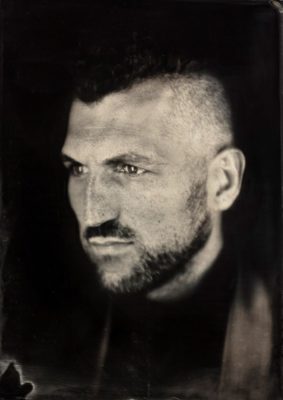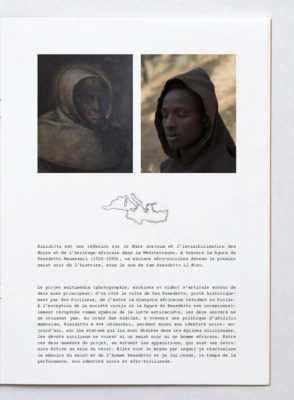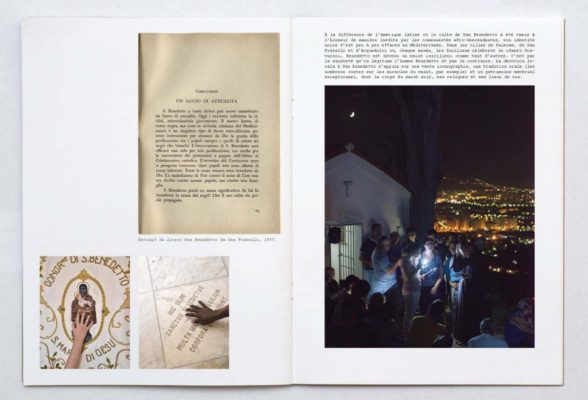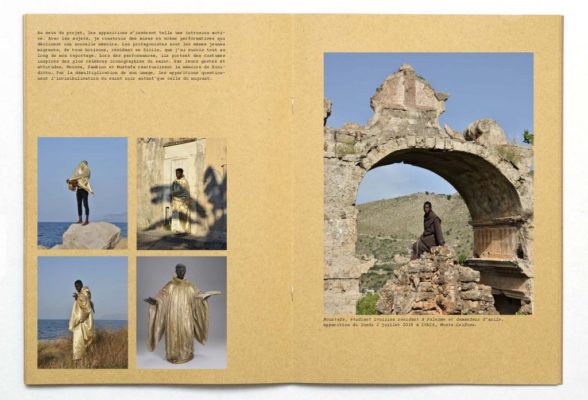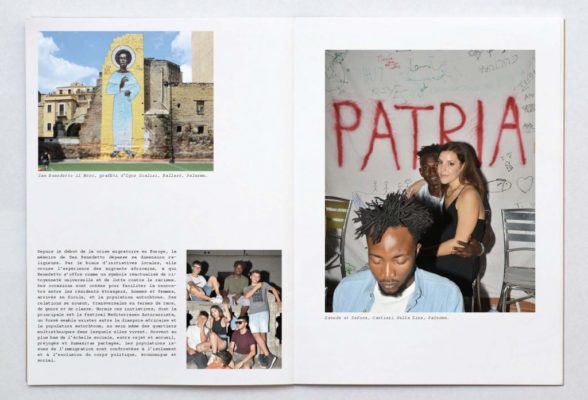Nicola Lo Calzo
After studying landscape architecture, Nicola Lo Calzo turned his gaze to photography. His photographic practice and research question notions of coloniality and identity. Imbued with profound empathy, Nicola Lo Calzo’s photographs show the ways in which minority groups interact with their environment and develop strategies of survival and resistance.
For almost seven years, he has been engaged in a long-term photographic research project on the memories of the slave trade and slavery. Cham, this ambitious and ongoing project has already taken him to Africa, the Caribbean and America. His photographs have been widely exhibited in museums, art centers and festivals, most notably the Macaal in Marrakesh, the Afriques Capitales in Lille, the Musée des Confluences in Lyon, the National Alinari Museum of Photography in Florence, and the Tropenmuseum in Amsterdam. His photography is present in many private and public collections including the Lightwork collection in Syracuse, Alinari Archives in Florence, the Pinacoteca Civica in Monza, the National Library of France in Paris and Amsterdam’s Tropenmuseum.
Nicola Lo Calzo lives and works between Paris, West African and the Caribbean. He is represented by l’Agence à Paris.
Project
Binidittu
Nicola Lo Calzo, for whom the Mediterranean has never been a border, aims to reacquaint us with a migrant, Binidittu, the name given to the hermit Saint Benedict the Moor, the son of African slaves and born in Sicily in the 16th century. Upon his death, the Afro-Sicilian friar became an icon. Canonized in 1807, he was the Catholic Church’s first black saint and was made Patron Saint of Palermo. Binidittu is a reflection on the treatment of migrants on the shores of the Mare nostrum, an allegory for our time.
“For several years, I have been working on a photographic project entitled Cham in which I document the multiple lineages and the various manifestations of the memories of colonial slavery. This quest has taken me from the West African coasts to the outskirts of Port au Prince via the Guadeloupe mornes, the forgotten neighborhoods of New Orleans, the banks of the River Maroni and the suburbs of Santiago de Cuba.
For the next stage of Cham, I shall continue my work on the banks of the Mediterranean Sea, particularly in Sicily, with the project Binidittu.
The Mediterranean has never been a border. The Mare nostrum has always belonged to those who cross it, live there, and control it. Today’s migrants traverse its waters in search of a new life.
Like most of the locals, they are probably unaware that these exceptional yet deadly waters were the homeland of another migrant, the symbol of freedom and emancipation. He was called Benedict or Binidittu, as the Sicilians fondly rechristened him. The son of African slaves, born in San Fratello in the province of Messina, he lived and died in Sicily as a hermit friar (1526-1589). Canonized in 1807 as Saint Benedict the Moor, he was the Catholic Church’s first black saint.
Despite being a “migrant”, “refugee” or “the African”, the Sicilians of the time realized Benedict’s humanity and made him the patron saint of Palermo.
This photographic project aims to contribute to the rediscovery of Binidittu, retracing the improbable life of Saint Benedict the Moor, and exploring the historical sites of his hagiography, the motivations of his followers, the worship of relics, and the religious and secular practices devoted to him in Sicily and elsewhere in the Mediterranean.
Binidittu emerges as an allegory of our time: an encounter between the Mare nostrum and the world, between oblivion and memory, between racism made commonplace and our shared humanity, between the Sicilian people’s aspirations and African migrants’ hopes of freedom and dignity as they drift towards Europe’s shores”.
